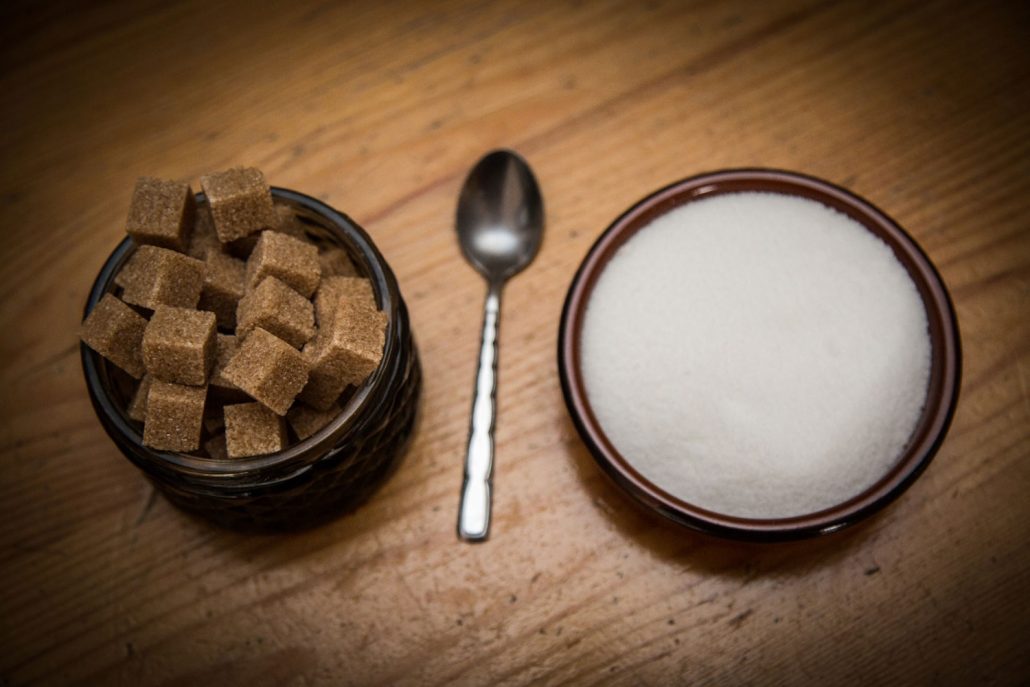Where is the hidden sugar hiding?
The major food culprits containing high sugar are easy to spot. Soft drinks, candies and cakes. But what about the less obvious ones we consume under the guise of ‘healthy food’.
Before we look at the hidden sources of sugar, it is important to clarify the difference between sugars that are naturally present in fully unrefined grain foods, vegetables, fruit or dairy, and the ‘free’ sugar that has been added or refined.
Most of us would have learnt at school that all carbohydrates break down into some form of sugar once in the body, and usually in the form of glucose. These carbohydrates found in bread, milk, pasta, fruit, starchy and leaved vegetables make up a substantial part of our diets and are an essential part of healthy eating. In some cases these foods have a bonus, for example the nutrients in leafy greens and dark fruits help stabilise your blood sugar levels.
In contrast the ‘free’ sugars that are either added to food or refined in some way, are the ones to watch out for as they should only make up 5% of your daily calorie intake. This amount which is roughly seven sugar cubes or 30g, are any sugars added to food or drinks, or found naturally in honey, syrups and unsweetened fruit juices.
This classification of ‘free’ sugar can sometime be confusing. For example the sugar in fruit, fructose, is good when eaten as part of the apple as the fibre within the apple slows down the absorption of the sugar. By juicing the apple and removing the pulp and with it the fibre, the fructose is then classified as a ‘free’ sugar. This is because the fructose contained in the juice now has direct and fast access to the liver. As it is hard for the fructose to be processed by the liver in this form and at a faster rate, the fructose is rapidly turned to fat.
So the same sugar, delivered to the body in two different ways, has a completely different effect on your health.
With a maximum recommended daily intake of 30g of ‘free’ sugar for adults, 24g for 7 to 10 years old and 19g for children aged 4 to 6, it makes sense to find out where these hidden sugars lie.
If it is a processed or packaged food or an obviously sugar-filled food like cookies, ice cream or a sweet treat, you should be under no illusions. But you may be surprised to find out that a lot of other seemingly “healthy” foods can be major sources of sugar.
Granola
A single bowl can have your entire daily intake of sugar so if you really love it, consider it a treat and just add one serving to plain greek yogurt
You could try… Muesli is usually lower in both fat and sugar or see Google to make your own sugar free granola
Breakfast Bars
Although seen as a quick breakfast option, the mostly sugary ingredients can negate their health benefits, making some varieties no better than the average candy bar
You could try… snacking on whole foods like fruits, nuts or raw vegetables and if you really need an energy bar for your next outdoor adventure buy one that contains simple ingredients and no added sugar
Breakfast smoothies
As described earlier, fruit is better consumed as a whole, rather than as a concentrated juice and if pre made in a bottle may contain more sugar than a soft drink
You could try… making your own fresh juice or just have a glass of water and keep the juice, with the fibre, in its natural packaging
Bread
A slice of white or wholemeal bread can contain up to half a teaspoon of sugar and some breads are only ‘brown’ thanks to carmel colouring
You could try… rye bread with a lower GI, or spelt bread that’s full of B vitamins
Muffins
It’s basically a small cake. The apple, oats or blueberries can’t make it healthy
You could try… remembering the phrase ‘you can’t have your cake and eat it’
Yoghurts
Frozen or not, they can be just as bad as eating ice-cream in terms of sugar content
You could try… unsweetened Greek yoghurt
Sauces, Condiments and Salad Dressing
Sweet French dressings and tomato sauce can have plenty of sugar and it is wise to look out for ingredients such as dextrose, honey, glucose and maltose which are essentially variations on sugar
You could try… a light homemade vinegar and olive oil dressing or a salsa with herbs and spices
Sushi
The white rice can be high in low fibre carbs and sugar is almost always added when cooking
You could try… brown rice sushi if they have it or stick to sashimi and a salad
Low-Fat Snacks and Ready-Meals
Beware of foods that market their low-fat content as you can be pretty sure that they make up for the lack of flavour with plenty of sugar
You could try… making your own baked beans with plain white, navy or black beans and then add your own homemade tomato sauce
Bottled or jarred sauces and soups
Some soups have the same amount of sugar as a slice of cake and almost anything in a jar will come with loads of added sugar
You could try… once again, make your own and add flavour with basic oil, balsamic vinegar or lemon
Coffee and Teas
As flavoured drinks in a bottle, they can contain more sugar than soft drinks
You could try… buying a flask and brewing your own
Alcohol
As if the alcohol wasn’t enough, excessive amounts of sugar in some alcoholic drinks can also contribute liver damage
You could try… wine, champagne or bottled beer as a serving of these drinks can contain around 2 grams of sugar
Yes, sugar is hidden almost everywhere. Knowing the difference between sugar that comes from consuming carbohydrates and those that are ‘free’ to roam can be the difference between a diet that looks ‘healthy’ and one that actually is healthy.



